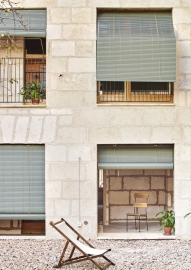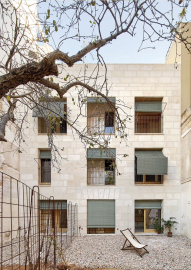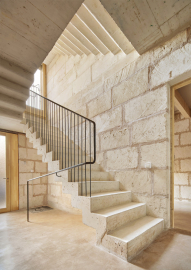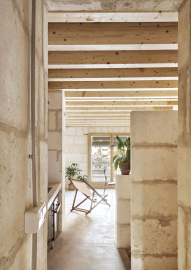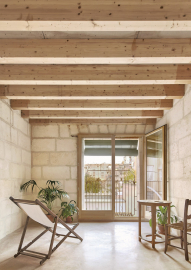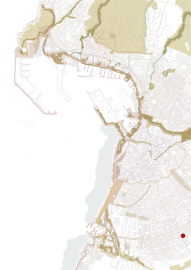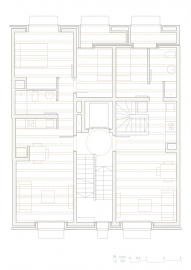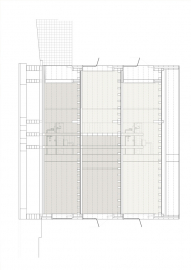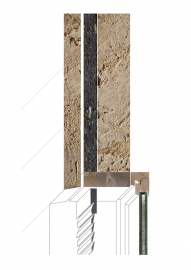5 Social Dwellings
This is the first project completed by the Institut Balear de l’Habitatge – IBAVI (Balearic Institute of Social Housing) that continues the Life Reusing Posidonia research line in Formentera, in this case adapted to the Mallorca resource map.
Marès stone, the industrialized material with the smallest ecological footprint in Mallorca, is the material used to built all the walls of the 3-storey high building. The objective is to demonstrate that the construction of load-bearing walls with this material, abandoned in the structural use of multi-family buildings for the last 30 years, allows compliance with current regulations, the Sustainable Development Goals and recovering its own material culture.
The CO2 emissions embedded in the facade construction system are 31,62 kg/CO2 per m2. If the façade had been solved using a conventional solution, the emissions would be 126,04 kg/CO2. In other words, the pollution produced during the construction of the façade has been reduced by 75%. This approach has been extended to all elements of the building. Passive measures in the summer season have been prioritized, introducing inertia as a basic element of temperature regulation.
The building is located in Son Gotleu, which began to develop in 1943. Initially, the urban fabric combined the typologies of closed blocks with one floor or two floors terraced houses with a patio, with isolated single-family houses. During the 60s, with the aim of accommodating the workers arriving from Spanish mainland, these single-family houses were replaced by blocks following the line of the modern movement, built in the cheapest way possible that have become, eventually, a source of social conflicts. In fact, Son Gotleu is one of the neighbourhoods with the highest index of social vulnerability and concentration of population with few economic resources. This conflict is another collateral effect of mass tourism in the 1960s.
The project recovers one of the best features of the area: the small terraced houses built in marès, the local stone, and revealing the map of resources of the island, which is once again economically viable in the 21st century thanks to the thermal and acoustic of the technical requirements and the different European directives. The climate emergency makes it possible to reuse those systems that would have prevented such a climate crisis.
Marès stone, the industrialized material with the smallest ecological footprint in Mallorca, is the material used to build the 3-story high building, except for the elevator shaft, made of white reinforced concrete to comply with the earthquake resistant regulations. The construction system is the same as the one used by Jørn Utzon in Can Lis in 1972: 20 cm internal load-bearing walls and a 10 cm external rain wall. In order to meet current habitability requirements, a 10 cm recycled cotton insulation has been incorporated into the air chamber, protected with a breathable waterproof sheet, low-emission glass with watertight FSC-certified wood carpentry, and BCN roller blinds have been installed.
The distribution of the five houses, takes advantage of all possible buildability by using the duplex typology on the right side of the staircase, where the two houses on three floors ara placed like a Tetris. On the left side of the staircase there are three simplex dwellings, one per floor. The houses are peasants and enjoy cross ventilation.
The building is A energy class, and the production of ACS is carried out aerothermal pumps, supported by a battery of photovoltaic panels.

